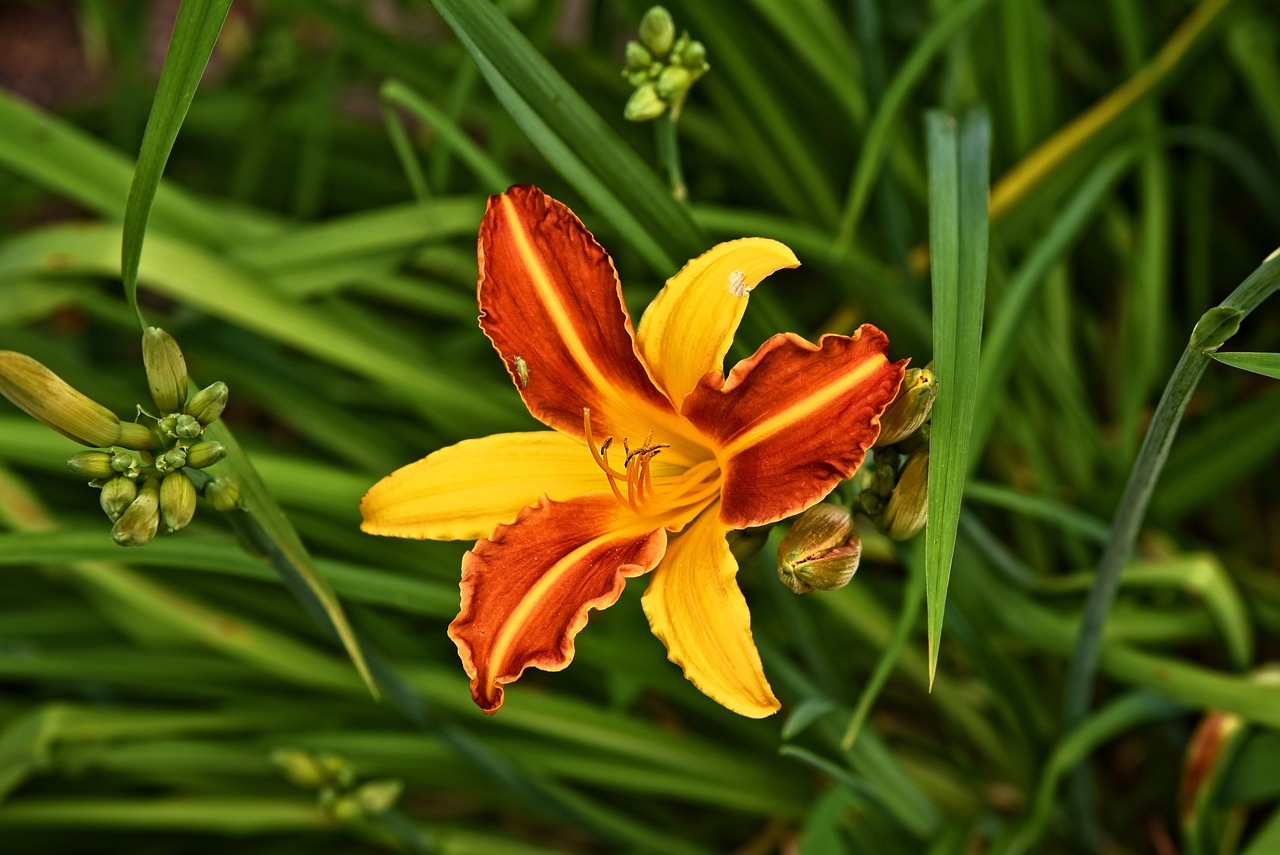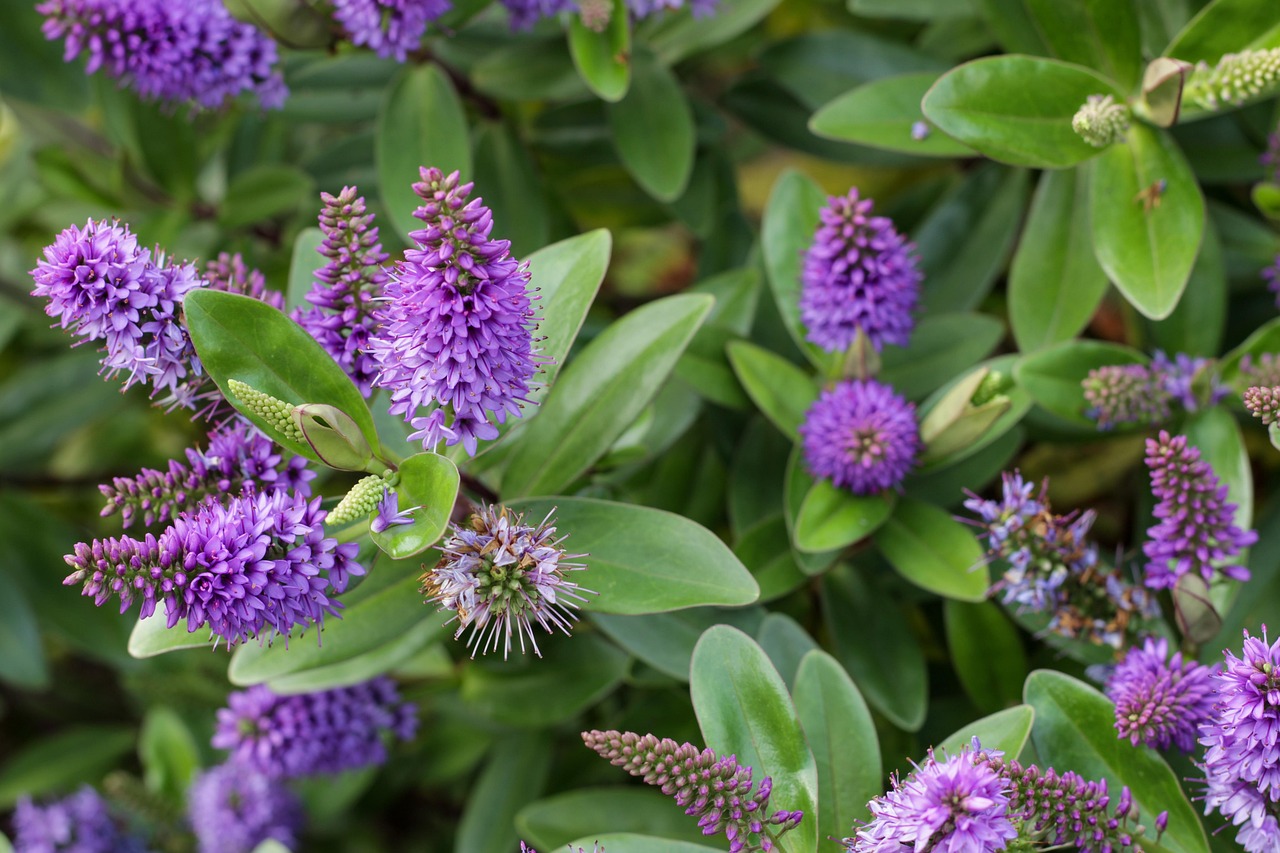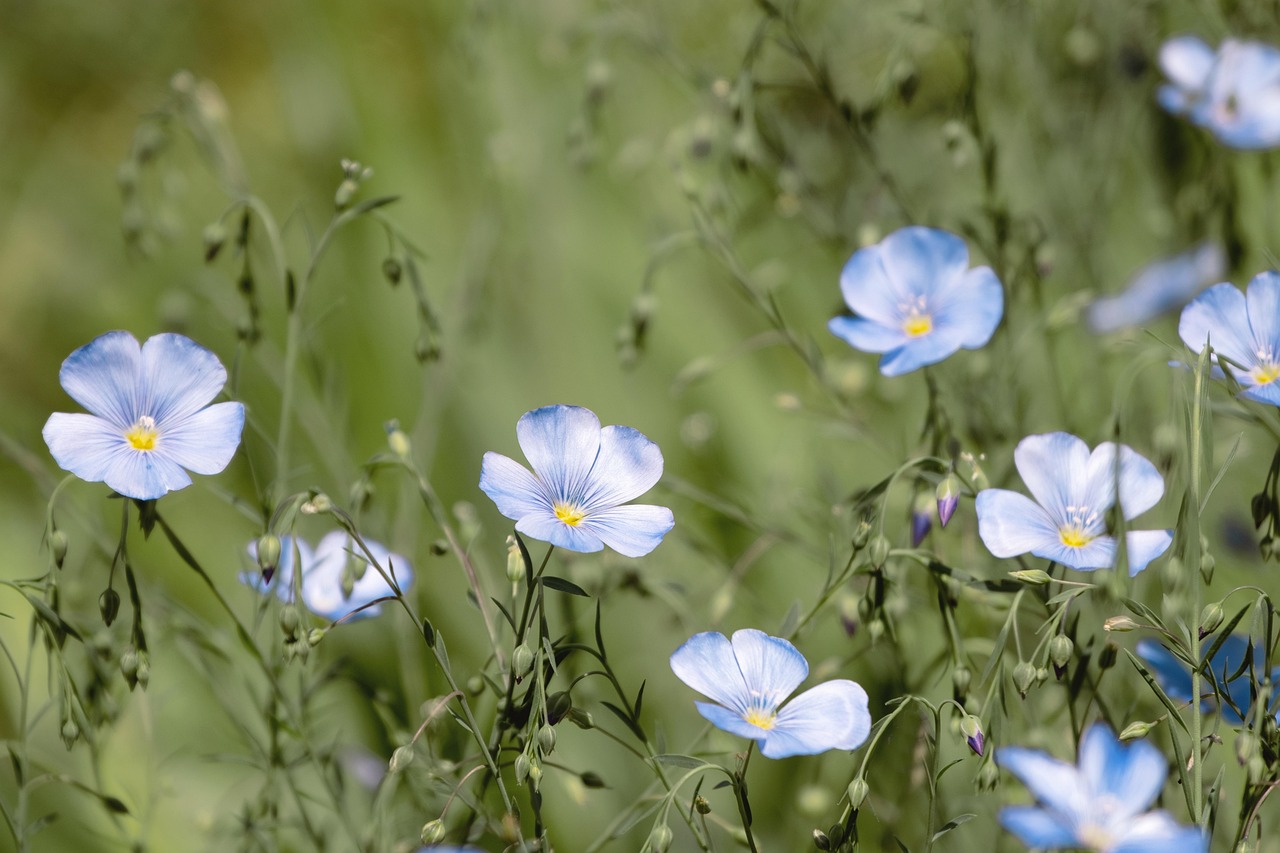Perennial flowers are a gardener’s best friend, offering vibrant blooms year after year with minimal effort. These resilient plants not only provide lasting beauty but also contribute to a sustainable garden ecosystem. Discover the power of perennials and how they can transform your outdoor space into a colorful paradise.
Perennials are defined as plants that live for more than two years. Unlike annuals, which complete their life cycle in a single growing season, perennials return each spring, often growing larger and more robust with age. This quality makes them an excellent choice for gardeners looking to create a low-maintenance yet stunning landscape.

One of the most appealing aspects of perennial flowers is their diversity. They come in various shapes, sizes, and colors, making it easy to find the perfect match for any garden design. In addition to their aesthetic value, perennials are beneficial for pollinators, attracting bees, butterflies, and other wildlife that contribute to the health of your garden.
Benefits of Perennial Flowers
Choosing perennial flowers for your garden offers numerous advantages. Understanding these benefits can help you appreciate their value and encourage you to incorporate them into your landscaping plans.
- Longevity: Perennials return every year, providing consistent beauty without the need for replanting.
- Low Maintenance: Once established, many perennials require less care compared to annuals, saving you time and effort.
- Cost-Effective: Although the initial investment may be higher, perennials save money over time since they do not need to be replaced annually.
- Diverse Options: With thousands of perennial varieties available, you can choose plants that bloom at different times throughout the growing season.
- Ecosystem Support: Perennials attract beneficial insects and wildlife, promoting biodiversity in your garden.
When planning your perennial garden, it is important to consider factors such as climate, soil type, and sunlight exposure. Different perennial species thrive in various conditions. Here is a table highlighting some popular perennial flowers along with their ideal growing conditions:
| Flower Name | Sunlight Requirement | Soil Type | Bloom Time |
|---|---|---|---|
| Echinacea (Coneflower) | Full Sun | Well-drained | Summer |
| Lavandula (Lavender) | Full Sun | Sandy or Rocky | Summer |
| Rudbeckia (Black-eyed Susan) | Full Sun to Partial Shade | Average | Summer to Fall |
| Aster | Full Sun to Partial Shade | Well-drained | Fall |
| Hosta | Partial to Full Shade | Moist, Well-drained | Summer |
This table serves as a quick reference when selecting perennial flowers that will thrive in your specific garden environment. By understanding the needs of each flower, you can create a harmonious and flourishing garden space that showcases nature’s beauty.
In addition to selecting the right plants, consider incorporating companion planting strategies. Pairing certain perennials together can enhance growth and reduce pests. For example, planting tall perennials like hollyhocks next to shorter varieties such as daisies can create an eye-catching layered effect while maximizing space.
The key to success with perennial flowers lies in proper care during the planting phase. It’s important to prepare the soil adequately and ensure that each plant has enough room to grow. With time and attention, your perennial garden will become a stunning display of colors and textures that change with the seasons.
Choosing the Right Perennials for Your Garden
Selecting the right perennial flowers for your garden is crucial for achieving a vibrant and sustainable landscape. It involves understanding your specific gardening conditions and preferences. Here are several considerations to keep in mind when choosing perennials.
Climate Considerations
Your local climate plays a significant role in determining which perennials will thrive in your garden. It’s essential to choose plants that are well-suited to your hardiness zone. The USDA Plant Hardiness Zone Map is a valuable resource for gardeners, as it provides information on which plants are likely to survive in various climates.
Soil Type and Quality
The type and quality of soil in your garden can greatly affect the success of your perennial flowers. Conducting a soil test can help you understand its pH level and nutrient content. Here are some tips for improving soil quality:
- Add Organic Matter: Incorporate compost or well-rotted manure to enhance soil fertility.
- Ensure Proper Drainage: Heavy clay soils may need amendments like sand or perlite to improve drainage.
- Adjust pH Levels: Based on your soil test, you may need to add lime to raise pH or sulfur to lower it.
Sunlight Exposure
Understanding the sunlight exposure in different areas of your garden is vital. Most perennials have specific light requirements, ranging from full sun to full shade. Consider the following when planning your garden layout:
- Full Sun: Choose plants that require at least six hours of direct sunlight daily, such as daylilies and sedum.
- Partial Shade: Select perennials that thrive with three to six hours of sunlight, such as astilbe and columbine.
- Full Shade: Opt for shade-loving varieties, like ferns and hostas, which do well in low-light conditions.
Designing Your Perennial Garden

A well-designed perennial garden can provide visual interest throughout the growing season. Here are some tips on how to create an appealing layout:
Layering Heights
Incorporating plants of varying heights creates depth and dimension. Taller perennials can be placed at the back of beds or against fences, while shorter varieties work well at the front. Consider these height ranges:
- Tall Plants: Delphiniums, hollyhocks, and sunflowers (3 feet and taller).
- Medium Plants: Coneflowers, black-eyed Susans, and asters (1 to 3 feet).
- Short Plants: Creeping phlox, dwarf daylilies, and thyme (up to 1 foot).
Color Schemes
A cohesive color scheme can unify your garden design. Consider planting perennials with complementary colors or varying shades of a single color to create an aesthetically pleasing display. Here are a few ideas:
- Monochromatic Palette: Use shades of blue or purple for a calming effect.
- Contrasting Colors: Pair warm colors like red and orange with cool colors like blue and green for dynamic contrast.
- Seasonal Blooms: Select a mix of early, mid, and late-blooming perennials to ensure continuous color throughout the growing season.
With thoughtful planning and consideration of your garden’s unique characteristics, you can create a stunning perennial landscape that evolves beautifully over time. Embrace the art of perennial gardening, and enjoy the benefits of these resilient beauties for years to come.

Planting and Caring for Perennial Flowers

Successfully growing perennial flowers involves more than just selecting the right varieties. Proper planting and ongoing care are essential to ensure these plants thrive in your garden. This section will cover best practices for planting, watering, fertilizing, and pruning perennials.
Best Practices for Planting
The planting process is critical for the long-term success of your perennial flowers. Follow these guidelines to ensure a healthy start:
- Timing: The best time to plant perennials is in the spring or fall. This allows them to establish roots before extreme temperatures arrive.
- Spacing: Follow the recommended spacing for each variety. Crowding plants can lead to competition for nutrients and water.
- Digging the Hole: Dig a hole that is twice as wide as the root ball but no deeper than the height of it. This encourages outward root growth.
- Soil Preparation: Amend the soil with compost or organic matter to provide essential nutrients.
- Planting Depth: Plant perennials at the same depth they were growing in their containers. This prevents stem rot and encourages healthy growth.
Watering Techniques
Watering is vital, especially during the establishment phase. Here are some tips for effective watering:
- Initial Watering: Water thoroughly immediately after planting to help settle the soil around the roots.
- Consistent Moisture: Keep the soil consistently moist but not soggy during the first growing season.
- Deep Watering: Encourage deep root systems by watering deeply less frequently rather than shallowly more often.
- Seasonal Adjustments: Reduce watering during cooler months and increase it during hot spells.
Fertilizing Your Perennials
Proper fertilization can enhance flowering and overall plant health. Here are some strategies for fertilizing perennial flowers:
- Soil Testing: Conduct a soil test to determine nutrient levels and pH, which will guide your fertilization choices.
- Choose the Right Fertilizer: Select a balanced fertilizer or one specifically formulated for perennials, usually with equal parts nitrogen, phosphorus, and potassium.
- Timing of Application: Apply fertilizer in early spring when growth begins and again after the first bloom for improved performance.
- Avoid Over-Fertilizing: Excessive fertilizer can lead to leggy growth and reduced flowering.
Pruning and Maintenance
Regular maintenance, including pruning, is essential for promoting healthy growth and extending blooming periods. Consider these maintenance tips:
- Deadheading: Remove spent flowers to encourage new blooms and prevent plants from going to seed too early.
- Cutting Back: After flowering, cut back dead or damaged stems to promote air circulation and overall plant vigor.
- Dividing Plants: Every few years, divide overcrowded perennials in early spring or fall to rejuvenate them and create new plants.
- Pest and Disease Management: Regularly inspect your plants for signs of pests or diseases. Use organic treatments whenever possible to maintain a healthy ecosystem.
Caring for perennial flowers involves understanding their unique needs and providing consistent attention. With proper planting, watering, fertilizing, and maintenance, your perennial garden will flourish, offering beauty and joy for years to come. Embrace the journey of nurturing these resilient plants as they grow and evolve in your landscape.
Creating a Sustainable Perennial Garden
Building a successful perennial garden goes beyond immediate aesthetics. It also involves creating a sustainable environment that can thrive with minimal resources. Adopting eco-friendly practices can enhance the health of your garden while contributing positively to the environment. Here are some tips for creating a sustainable perennial garden:
Mulching
Applying mulch around your perennial plants is beneficial for several reasons. Organic mulches, such as wood chips or straw, help retain moisture, suppress weeds, and gradually improve soil quality as they decompose. Here are some key benefits of mulching:
- Moisture Retention: Mulch helps keep the soil moist by reducing evaporation, which is particularly important during hot summer months.
- Weed Suppression: A thick layer of mulch can effectively block sunlight, preventing weed seeds from germinating.
- Soil Improvement: As organic mulch breaks down, it adds nutrients to the soil, promoting healthier plant growth.
Companion Planting
Companion planting is an effective strategy for enhancing plant health and productivity. By planting complementary species together, you can improve growth, deter pests, and attract beneficial insects. Consider these companion planting techniques:
- Mutual Benefits: Some plants enhance each other’s growth. For example, planting marigolds with perennials can repel aphids and other pests.
- Attracting Pollinators: Including flowering companions like lavender or echinacea can attract bees and butterflies, benefiting your entire garden.
- Diverse Planting: Mixing different species increases biodiversity, making your garden more resilient to pests and diseases.
Water Conservation
Effective water management is crucial for sustainability in perennial gardening. Here are some strategies to conserve water:
- Drip Irrigation: Consider installing a drip irrigation system to deliver water directly to the plant roots, minimizing waste.
- Rain Barrels: Collect rainwater from roofs using barrels. This water can be used for irrigation during dry spells.
- Drought-Tolerant Varieties: Incorporate drought-resistant perennials that require less water once established, such as sedums or coreopsis.
Final Thoughts
The power of perennial flowers lies not only in their beauty but also in their resilience and ability to enrich your garden for years to come. By understanding their unique needs and following best practices for planting and care, you can create a stunning landscape that evolves with the seasons. The sustainable practices discussed can further enhance the longevity and health of your garden.
As you embark on your journey of perennial gardening, remember that patience and observation are key. Each garden is a living ecosystem that requires time to balance and flourish. Embrace the changing seasons, and let your garden become a source of joy and inspiration.
Ultimately, perennial flowers provide an opportunity to connect with nature while cultivating a vibrant outdoor space. With careful planning and dedication, you can enjoy the beauty of these remarkable plants year after year, transforming your garden into a thriving sanctuary for both yourself and wildlife.
